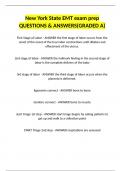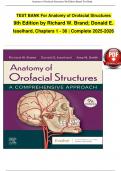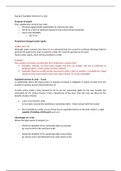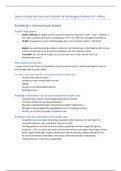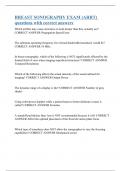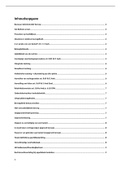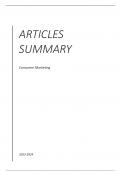Exam (elaborations)
New York State EMT exam prep QUESTIONS & ANSWERS(GRADED A)
- Course
- Institution
First Stage of Labor - ANSWER the first stage of labor occurs from the onset of the onset of the true labor contractions until dilation and effacement of the uterus. 2nd stage of labor - ANSWER the hallmark finding in the second stage of labor is the complete delivery of the baby 3rd stage of...
[Show more]
